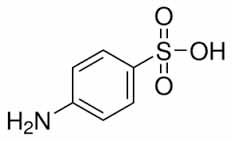 Neurobehavioral Toxicology and Teratology, 1982. Jan-Feb;4(1): 43-9.
Neurobehavioral Toxicology and Teratology, 1982. Jan-Feb;4(1): 43-9.
Goldenring studied the effects of giving sulfanilic acid to rat pups. He chose this chemical because it is formed when azo food dyes are digested. He gave the sulfanilic acid to normal rat pups and to a group of pups treated with 6-hydroxydopamine (6-OHDA). 6-OHDA is given to rats to damage the terminals (ends) of certain brain neurons so one can see if those are the neurons that something else will normally affect. It is also often used to create a model for Parkinson’s Disease.
The normal pups became hyperactive and had difficulty learning to avoid a shock after they were given sulfanilic acid, but nothing happened to the 6-OHDA-treated pups, indicating that sulfanilic acid (the food dye metabolite) may be the chemical in food dyes that causes hyperactivity.




















